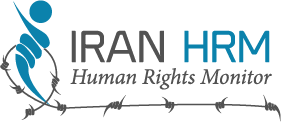A young man who was shot and injured by the state security forces during the November protests, lost his life.
The wounded protester, Mohammad Maleki, passed away on January 6 from the severity of his wounds.
His body was buried two days later in the city of Baharestan, in the province of Tehran.
Mohammad Maleki was shot and injured on November 16, 2019, by security forces during the nationwide protests in Tehran. The bullets had pierced the lungs and spine of the young man.
He was paralyzed from the bullets damage and was taken to hospital where he was placed in critical condition.
Mohammad Maleki was discharged from hospital in early December and passed away on January 6.
The 23-year-old street peddler, had became a father two weeks before his death.
According to Human Rights Activists News Agency (HRANA), the doctor who came his home to issue a death certificate refuses to do so after learning of his condition and called the police.
The police then transferred Mohammed’s body to forensic medicine for an autopsy. Four undercover agents were stationed around his home.
“Mr Maleki’s body was taken to Kahrizak Forensic Medical Center for autopsy, without his family’s permission. Security forces had pressured his family for an autopsy,” the report said.
Eventually, his body was buried in the Imamzadeh Bagher Cemetery in Salehabad, Tehran, after the autopsy.
The report added, “Security forces had initially told the family that if they agreed with the autopsy, Mohammad would be declared a martyr and would hand over the body for burial and burial and they would deliver the body for burial and funeral. Otherwise, they should bury him at night. Eventually they allowed his body to be buried after the autopsy and pulling out the bullets. However, the authorities told the family that they will send the bullet for testing. If the bullets were fired from the state security forces’ guns, the family would have to pay for it.
At least 4,000 persons were wounded by live ammunition or pellet guns during the protests in November 2019 against sudden hike in fuel prices. Many of the wounded protesters were abducted from hospitals in the provinces of Tehran, Shiraz, Alborz, Khuzestan, etc. and taken to unknown locations without completing their treatment.
In some instances, security forces took wounded protesters to hospital but did not allow the hospital staff to register their identities and file their case. They even went into the operation room and took away the patient after the bullets were removed.
In some cities, including Sirjan, Islamshahr, and Shahriar, many of the wounded Iranian protesters did not go to hospital despite being shot. They were treated at home with limited wherewithal. Some of them have lost their lives due to infection caused by failure to remove the bullets from their bodies.
In many parts of the country, however, some physicians and medical students have volunteered to treat the wounded.
The Iranian regime brutally cracked down on nationwide protests that erupted on November 16 after the regime tripled the price of gasoline. At least 1,500 protesters were killed, around 4,000 were wounded and injured and 12,000 were detained.











